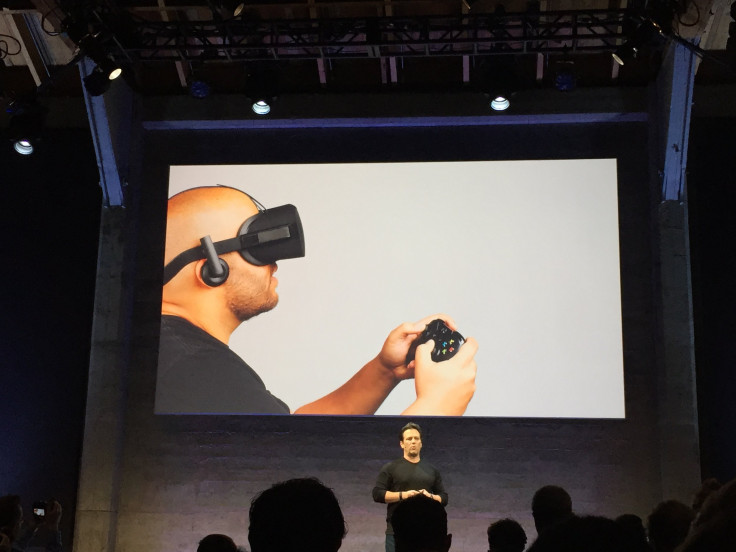Oculus Rift Games: Microsoft Xbox Partnership Will Bring Virtual Reality To More Games, But Will They Be Better?

Oculus VR, the company behind the Rift virtual-reality headset, shook up the gaming world this week by announcing a partnership with Microsoft Corp. This means that every Oculus Rift will be shipped with a wireless Xbox One controller, but the entanglement of Microsoft gaming and virtual reality may run a bit further than a few launch games.
Right now, we know of three large games that the Oculus Rift will support. They are “Chronos,” a third-person role-playing game, “Eve Valkyrie,” a starfighter/first-person shooter, and the just-announced Rift exclusive “Edge of Nowhere.” But Microsoft’s plans reach beyond a small subset of games: When the Oculus Rift ships early in 2016, Windows 10 will offer native support for the VR headset.
Which opens a whole host of games to potential VR support. However, it’s difficult to say whether Oculus will be a good thing for traditional games.
Another Kinect?
The last time Microsoft gave the world a peripheral promising a revolutionary gaming experience, we got the Kinect 2.0. That didn’t go so well, and Microsoft eventually decided to sell the Xbox One without the Kinect bundled, despite numerous claims it would never do so. But that’s likely because the Kinect, beyond its novel concept, didn’t really bring much fun to gaming (the excellent “Dance Central” series aside). Games that didn’t solely use the Kinect for inputs frequently made no case for the peripheral’s presence, and often hindered the experience, but that didn’t stop developers from shoehorning Kinect support into games. With the direct support of Microsoft, it’s likely a number of so-called normal Xbox/Windows games will gain some semblance of Oculus support.
Some games have Oculus support already, and a portion of them work decently well: “Grand Theft Auto V” in first-person mode can be just about the most immersive gaming experience you could have. Even alpha VR builds can be impressive, although video recorded from an Oculus doesn’t really translate the experience well. But VR is not necessarily appropriate for all games or gamers: I can say that, during a demo for some nondescript fitness game a few months ago, I got quite a headache. Never mind that I was shut off from the outside world and nearly smacked a defenseless table. It was obviously more immersive than a game that pursued a similar fitness concept, albeit with now-antiquated motion controls (Wii Fit), but it was far more cumbersome than the system that already worked.
Jumping Into VR
There are genres wherein, even though it’d be a new experience, VR would make gaming more difficult. In theory, jumping into a fighting game would be amazing, but adding Oculus support to a sideways fighting game such as “Mortal Kombat X” wouldn’t give you a better look at what’s going on. If anything, the constant movement would probably make you a bit nauseous. The same goes for isometric shooters such as “Hatred,” or turn-based games such as “XCOM” -- there’s nothing really to be gained by adding VR compatibility.
So I hope that developers (especially the ones owned by Microsoft), recognize which games will actually be enhanced by the Oculus, so we don’t have a slew of titles with budgets wasted on integrating Oculus support when they could have been spent on bettering the core games. The prospect of great VR games is immensely exciting, and, despite my less-than-stellar experiences with the technology so far, I’d like to see it grow into a meaningful advancement for the industry.
Which it will do, as long as we don’t get games with half-baked support. Sony Corp.’s VR system, Project Morpheus, is slated to hit the market at the same time, and the strong HTC/Valve Vive project has been designed with the vast library of Steam in mind. So there’s at least two more chances someone will get it completely right, even if Microsoft doesn’t.
The Oculus Rift will be available in the first quarter of 2016.
© Copyright IBTimes 2024. All rights reserved.






















